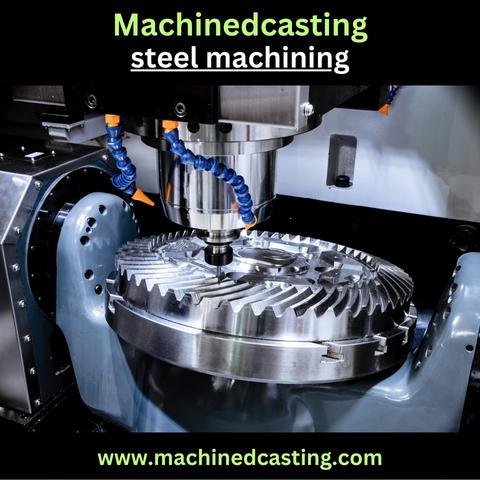Steel machining is a critical process in various industries, ranging from automotive and aerospace to construction and manufacturing. Whether you're a seasoned professional or just starting out, mastering steel machining techniques is essential for producing high-quality components efficiently. In this guide, we'll delve into the intricacies of steel machining, covering everything from material selection to tooling and cutting strategies.
-
Understanding Steel Types: Before diving into machining, it's crucial to understand the different types of steel and their properties. Common steel grades include carbon steel, stainless steel, and alloy steel, each with its unique characteristics such as hardness, toughness, and machinability. Choose the appropriate steel grade based on the requirements of your project.
-
Preparation and Setup: Proper preparation and setup are key to successful steel machining. Ensure that your machining equipment, including CNC machines, cutting tools, and workholding devices, are in optimal condition. Select cutting tools specifically designed for machining steel, considering factors like material composition, cutting speed, and feed rate.
-
Tool Selection: When it comes to steel machining, selecting the right cutting tools can make a significant difference in performance and efficiency. Carbide inserts are commonly used for their durability and heat resistance, while high-speed steel (HSS) tools are suitable for less demanding applications. Choose tool geometries and coatings tailored to the specific requirements of your machining operation.
-
Optimizing Cutting Parameters: Achieving the desired surface finish and dimensional accuracy requires fine-tuning cutting parameters such as cutting speed, feed rate, and depth of cut. Experiment with different combinations to find the optimal balance between productivity and tool life. Consider factors like workpiece material, tool material, and machine capabilities when determining cutting parameters.
-
Coolant and Lubrication: Steel machining generates heat, which can negatively impact tool life and surface finish. Utilize coolant and lubrication systems to dissipate heat and improve chip evacuation during the machining process. Choose the appropriate coolant type (e.g., water-soluble coolant, cutting oil) based on the machining operation and environmental considerations.
-
Chip Control: Proper chip control is essential for preventing chip buildup, tool wear, and surface defects during steel machining. Use chip breakers, chip deflectors, and appropriate cutting strategies (e.g., climb milling, conventional milling) to manage chips effectively. Implementing effective chip control techniques also enhances safety in the machining environment.
-
Quality Assurance: Throughout the machining process, continuously monitor and inspect machined components to ensure they meet quality standards and dimensional tolerances. Utilize precision measuring instruments such as micrometers, calipers, and surface roughness testers to verify part dimensions and surface finish. Implement corrective actions as needed to address any deviations from specifications.
-
Tool Maintenance and Replacement: Regular maintenance and timely replacement of cutting tools are essential for consistent machining performance and tool longevity. Implement a tool management system to track tool usage, monitor tool wear, and schedule maintenance tasks proactively. Sharpen or replace dull cutting tools promptly to prevent machining defects and production delays.
-
Continuous Improvement: Steel machining is a dynamic process that can benefit from continuous improvement initiatives. Gather feedback from machinists, operators, and quality control personnel to identify opportunities for optimization and efficiency gains. Invest in employee training and skill development to enhance machining capabilities and adapt to evolving industry trends.
By following these guidelines and refining your steel machining techniques through practice and experience, you can achieve superior results and maintain a competitive edge in today's demanding manufacturing environment. Remember to stay informed about advancements in machining technology and industry best practices to stay ahead of the curve.


